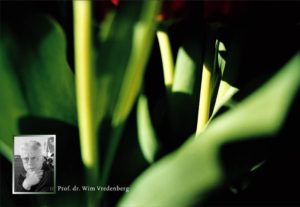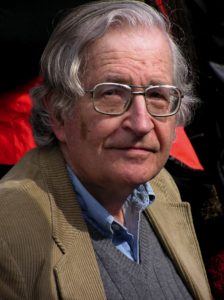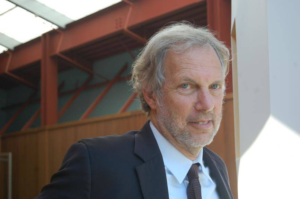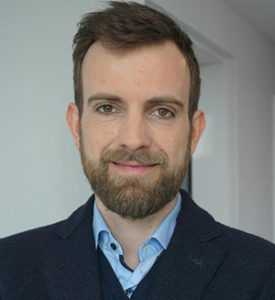Wim Vredenberg – Publications & Links
 Publications W.J. Vredenberg, LUW, 1978-2008
Publications W.J. Vredenberg, LUW, 1978-2008
Vredenberg, W.J. and A.H.C.M. Schapendonk. Evidence for a light-induced blue band shift of part of the P515 pigment pool in intact chloroplasts. FEBS Lett. 91, 1978, 90-93.
Schapendonk, A.H.C.M. and W.J. Vredenberg. Activation of the Reaction II component of P515 in chloroplasts by pigment system 1. FEBS Letters 106, 1979, 257-261.
Schapendonk, A.H.C.M., W.J. Vredenberg and W.J.M. Tonk. Studies on the kinetics of the 515 nm absorbance change in chloroplasts. I. Evidence for the induction of a fast and slow P515 response upon saturating light flashes. FEBS Letters 100, 1979, 325-330.
Tonk, W.J.M., A.H.C.M. Schapendonk and W.J. Vredenberg. A double-compartment mixing cuvette for measuring light- and chemically-induced absorbance changes in suspensions of energy-conserving particles. J. of Biochemical and Biophysical Methods. 1, 1979, 193-194.
Schapendonk, A.H.C.M., A.M. Hemrika-Wagner, A.P.R. Theuvenet, H.W. Wong Fong Sang, W.J. Vredenberg and R. Kra. Energy-dependent changes of the electrokinetic properties of chloroplasts Biochem. – 19, 1980, 19-22.
Vredenberg, W.J. and A.H.C.M. Schapendonk. Reaction kinetics of P515 in chloroplasts. Transmembrane (reaction I) and inner membrane (reaction II) electric fields. In: Photosynthesis Vol. I, ( G. Akoyunoglou ed.) Balaban Int. Sci. Serv. Philadelphia, 1981, 489-499.
Vredenberg, W.J. P515: A monitor of photosynthetic energization in chloroplast membranes. Physiol. Plant. 53(4), 1981, 598-602.
Kooten, O. van, F.A.M. Leermakers, R.L.A. Peters, and W.J. Vredenberg. Indications for the chloroplasts as a tri-compartment system: Micro-electrode and P515 measurements imply semi-localized chemiosmosis. In: Proc. VIth Int. Congr. on Photosynthesis, ( C. Sybesma ed.) 1983, II4, 265-268.
Kooten, v. O., A.G.M. Gloudemans, and W.J. Vredenberg. On the slow component of P515 and the flash-induced reduction of cytochrome b563 in chloroplast membranes. Photobiochem. Photobiophys. 6, 1983, 9-14.
Wim Vredenberg – PhD Theses
 PhD theses Chair Biophysical Plant Physiology, Wageningen University 1980-2000
PhD theses Chair Biophysical Plant Physiology, Wageningen University 1980-2000
Schapendonk, A.H.C.M. -Electrical events associated with primary photosynthetic reactions in chloroplast membranes. -1980, Promotor Prof. Dr. W.J. Vredenberg
Brakel, G.H. van -The triplet state of chllorophyll-a in whole algal cells -1982, Promotoren Prof.T.J. Schaafsma en Prof.W.J.Vredenberg, co-referent Dr J.J.S.vRensen
Vermaas, W.F.J. -The interaction of quinones, herbicides and bicarbonate with their binding environment at the acceptor side of Photosystem II in photosynthesis. -1984, Promotoren Prof. Dr. W.J. Vredenberg en Prof.Dr G. Renger, co-promotor Dr. J.J.S. van Rensen,
Snel, J. -Regulation of photosynthetic electron flow in isolated chloroplasts by bicarbonate, formate and herbicides. -1985, Promotor Prof. Dr. W.J. Vredenberg, co-promotor Dr.J.J.S. van Rensen,
Cone, J.W. -Photocontrol of seed germination of wildtype and long-hypocotyl mutants of Arabidopsis thaliana. -1985, Promotor Prof. Dr. W.J. Vredenberg, co-promotor Dr. R.E. Kendrick,
Peters, R. -Electrochromic effects in relation to energy transduction and energy coupling in chloroplast membranes. -1986, Promotor Prof. Dr. W. J. Vredenberg,
Kraak, H.L. -Phytochrome and greening in etioplasts. -1986, Promotor Prof. Dr. W.J. Vredenberg, co-promotor Dr. R.E. Kendrick,
Kooten, O. van. -Free energy transduction. Modelling electrochemical events. -1988, Promotor Prof. Dr. W.J. Vredenberg,
Adamse, P. -Mutants as an aid to the study of higher plant photomorphogenesis. -1988, Promotor Prof. Dr. W.J. Vredenberg, co-promotor Dr. R.E. Kendrick,
Hove, L.W.A. van. -The mechanism of NH3 and SO2 uptake by leaves and its physiological effects. -1989, Promotoren Prof. Dr. E.H. Adema en Prof. Dr. W.J. Vredenberg,
Naber, J.D. -Molecular aspects of herbicide binding in chloroplasts. -1989, Promotor Prof. Dr. W.J. Vredenberg, co-promotor Dr. Ir. J.J.S. van Rensen,
Bossen, M.E. -Protoplasts as a model system to study phytochrome-regulated changes in the plasma membrane. -1990, Promotor Prof. Dr. W.J. Vredenberg, co-promotor Dr. R.E. Kendrick,
Ooms, J.J.J. -Electrochromic absorbance changes in relation to electron transport and energy coupling in thylakoid membranes. -1990, Promotor Prof. Dr. W. J. Vredenberg,
Peters, J.L. -Photomorphogenetic mutants of higher plants. -1992, Promotor Prof. Dr. W.J. Vredenberg, co-promotor Dr. R.E. Kendrick,
Schansker, G. -Mechanistic aspects of the inhibition of photosynthesis by light -1996, Promotor Prof. Dr. W.J. Vredenberg, co-promotor Dr.ir. J.J.S. van Rensen.
Kerckhoffs, Huub -Physiological Functions of Phytochromes in Tomato. A study using photomorphogenic mutants -1996, Promotor Prof. Dr. W.J. Vredenberg, co-promotor: Dr R.E. Kendrick
Voorthuysen T. van. -The electrical potential as a gauge of photosynthetic performance in plant Chloroplasts. A patch-clamp study. -1997, Promotor Prof. Dr. W.J. Vredenberg, co-promotor Dr. J.F.H. Snel.
Curwiel, V.B. -Regulation of photosynthesis and energy dissipation in triazine-resistant and susceptible chenopodium album. -1997, Promotor Prof. Dr. W.J. Vredenberg, co-promotor Dr.ir. J.J.S. van Rensen.
Geel, Corine. -Photosystem II electron flow as a measure for phytoplankton gross primary production -1997, Promotor Prof. Dr. W.J. Vredenberg, co-promotor Dr. J.F.H. Snel,
Wijngaard, P.W.J. van den -The electrophysiology of chloroplast protein import. The involvement of an anion channel in protein translocation across the inner mebrane. -1999, Promotor Prof. Dr. W.J. Vredenberg, co-promotor, Dr J.F.H. Snel
Why Trump’s Racist And Neo-Fascist Campaign Strategy Resonates In 21st Century America
With the November election just around the corner, Donald Trump is raising the level of his racist and fascist rhetoric to new heights, fully aware that his hate speech and authoritarian overtures resonate with a large segment of white Americans in 21st century who, as surreal and obscene as this may sound, would have preferred that time stood still, stuck either in the era of the plantation system or at least at a time when whites in this country felt so superior to minorities that they could discriminate and oppress the “Other” without fear of getting into trouble with the law, let alone become witness to public outcries over police brutality, systemic racism, and demands for gender and racial equality.
Indeed, it is the awareness of the existence of a very large segment of white Americans in 21 st century who wish to roll back the clock on account of their growing insecurities and fears about the[ir] future that prompts Trump to sound ever more racist and project ever more the image of a strong man as time moves closer to election time. In doing so, his hope is that even moderate white voters might be stirred into feeling the need to join in on what he obviously hopes they may come to recognize and appreciate, just like his traditional base of white supremacists does, as an urgent “patriotic” campaign on the part of the “Great White Leader” to save [white] America’s soul. As for his rich supporters, he doesn’t care one way or another about the impact of his rhetoric on them because he knows they will continue supporting him as long as he maintains a steadfast course of lavishing them with gifts, such as huge tax cuts, deregulation policies, etc.
Trump’s attempt to outdo himself was most evident at his Minnesota rally a few days ago– perhaps the most extreme example so far of how far the “Great White Leader” is ready and willing to go in order to spread fear and promote hate as tactical means of securing another electoral victory in a country sharply divided into different political tribes.
And make no mistake about it: reliance on fear, hate, and violence have always been the political tools of fascists of all stripes.
Trump declared to Minnesotans that Biden would turn their state into a “refugee camp.” He warned them of “sleepy Joe Biden’s extreme plan to flood” Minnesota with refugees from Somalia, while denigrating at the same time the election of Rep. Ilhan Omar, who came to the United States as a child refugee from Somalia, calling her an “extremist”. To this insidious racist rhetoric, his fanatical base from below responded by screaming “send her back.”
Trump’s racist rhetoric hit a crescendo when he let his crowd know that they are supporting him because of their “good genes.”And to further upgrade his neo-fascist profile with his adoring crowd, he said it was “a beautiful thing” when journalist Ali Velshi got struck by a rubber bullet while covering a peaceful protest.
All in all, Trump’s performance at the Minnesota rally on September 18 was an act stolen from the electoral campaign of Hitler and his Nazi party. The only thing he fell short from saying was that anyone who did not support him should be deprived of civic rights and sent to prison or concentration camps.
No rational human being can fail to see that Trump is a racist with strong fascist impulses, but even critics of Trump fail to see or properly acknowledge that the “Great White Leader” employs the rhetoric of racism and fascism because there is a huge market for it in 21 st century America!
Sjibbolet: de bijbel in onze literatuur
 De bijbel is, overeenkomstig zijn inhoud, alomtegenwoordig in onze letteren: citaten uit of allusies aan de Schrift komen in ontelbare gedichten, verhalen en romans voor. Maar om zijn invloed waar te nemen, is niet meteen een tijdrovende tekstanalyse nodig, menige boektitel is al een woordelijk citaat of variant daarop.
De bijbel is, overeenkomstig zijn inhoud, alomtegenwoordig in onze letteren: citaten uit of allusies aan de Schrift komen in ontelbare gedichten, verhalen en romans voor. Maar om zijn invloed waar te nemen, is niet meteen een tijdrovende tekstanalyse nodig, menige boektitel is al een woordelijk citaat of variant daarop.
Hedda Martens (1947) debuteerde in 1982 met de bundel Sjibbolet en andere verhalen. Een sjibbolet of schibbolet is een kenmerk waaraan herkend kan worden of iemand tot een bepaalde groep of overtuiging behoort. Het bijbelboek Richteren 12:5-6 geeft daarvoor de oorspronkelijke verklaring.
Tijdens een oorlog tussen de Gileadieten en Efraïmieten poogden de laatsten, door zich als Gileadieten te vermommen, de Jordaan over te vluchten.
“Wanneer nu een der vluchtelingen van Efraim zeide: Laat mij oversteken, dan zeiden de mannen van Gilead tot hem: Zijt gij een Efraïmiet? En antwoordde hij: Neen, dan zeiden zij tot hem: Zeg eens sjibboleth. Zeide hij dan: sibboleth, en kon hij het dus niet op de juiste wijze uitspreken, dan grepen zij hem en sloegen hem dood.”
Maarten ‘t Harts roman De Jacobsladder (1986) verwijst naar een droom die aartsvader Jakob had:
“Toen droomde hij, en zie, op de aarde was een ladder opgericht, waarvan de top tot aan de hemel reikte, en zie, engelen Gods klommen daarlangs op en daalden daarlangs neder.” (Genesis 28:12)
Ook Marnix Gijsen (1899-1984) putte voor een titel uit de bijbel. De vleespotten van Egypte (1952) is gebaseerd op de uitdrukking `hunkeren naar de vleespotten van Egypte’, die voortkomt uit het gemopper van de Israëlieten tegen Mozes en Aaron, die hen uit Egyptische slavernij bevrijd hadden en naar het beloofde land voerden. Exodus 16:3:
“Och, dat wij door de hand des Heren in het land Egypte gestorven waren, toen wij bij de vleespotten zaten en volop brood aten; want gij hebt ons in deze woestijn geleid om deze gehele gemeente van honger te doen omkomen.”
Theo Kars (1940-2015) verzamelde een aantal beschouwingen over literatuur onder de van zelfoverschatting getuigende titel Parels voor de zwijnen (1975). Dat baseerde hij, zij het wellicht niet uit eigen waarneming, op Mattheus 7:6, waarin Jezus oproept:
“Geeft het heilige niet aan de honden en werpt uw paarlen niet voor de zwijnen, opdat zij die niet vertrappen met hun poten en, zich omkerende, u verscheuren.”
Ik kan die uitdrukking nooit lezen zonder onmiddellijk te denken aan een anekdote over de Amerikaanse schrijfster Dorothy Parker, die eens gelijktijdig met een aanzienlijk jongere collega een deur naderde waar maar één van hen tegelijk door kon. De jongste hield haar pas in, zeggend ‘Age before beauty’. Parker nam meteen de uitnodiging aan, onder de woorden ‘Pearls before swine’.
Ook Nescio’s bundel Mene Tekel (1946) heet naar een spreuk uit het Oude Testament. Daniël 5:25-28 verhaalt hoe tijdens een feest van Belsazar, koning der Chaldeeën, lichtende letters op de muur verschijnen:
“Dit is het schrift, dat geschreven is: Mene, mene, tekel ufarsin. Dit is de uitlegging van de woorden: Mene: God heeft uw koningschap geteld en er een einde aan gemaakt; Tekel, gij zijt in de weegschaal gewogen en te licht bevonden; Peres: uw koninkrijk is gebroken en aan de Meden en Perzen gegeven.”
Uiteraard heeft dit fragment ook de uitdrukking ‘gewogen maar te licht bevonden’ opgeleverd, alsook ‘een teken aan de wand’. Daniël 5:5 beschrijft hoe Belsazar de tekenen ziet verschijnen:
“Terzelfdertijd verschenen vingers van een mensenhand, die tegenover de luchter op de kalk van de wand van het koninklijk paleis schreven, en de koning zag de rug van de hand, die aan het schrijven was.”
Mene tekel vond ook zijn weg naar Nederlandse poëzie, bijvoorbeeld naar deze regels uit het gedicht ‘Glazenwasser’ (1949) van Gerrit Achterberg
Handen- en voetental
verrichten in de lucht
een klein gebarenspel, een klucht
die hij alleen begrijpen zal;
het mene tekel en getal
van roekeloze hemelzucht.
Marnix Gijsens De barmhartige Samaritaan (1952) gaat terug op het evangelie van Lucas, op de gelijkenis van de Samaritaan die zich, in tegenstelling tot een priester, het lot aantrok van een door overvallers gewonde reiziger:
“Doch een Samaritaan, die op reis was, kwam in zijn nabijheid, en toen hij hem zag, werd hij met ontferming bewogen. En hij ging naar hem toe, verbond zijn wonden, goot er olie en wijn op; en hij zette hem op zijn eigen rijdier, bracht hem naar een herberg en verzorgde hem.” (Luc. 10:33-34)
The Political Economy Of Saving The Planet. An Interview With Noam Chomsky & Robert Pollin
What needs to be done to advance a successful political mobilization on behalf of a global Green New Deal—a program that includes emissions reductions, expands renewable energy sources, addresses the needs of vulnerable workers, and promotes sustainable and egalitarian economic growth? Political scientist C. J. Polychroniou spoke with Noam Chomsky and economist Robert Pollin, who has been at the forefront of the fight for an egalitarian green economy for more than a decade, to discuss prospects for change, the connections between climate and the COVID-19 pandemic, and whether eco-socialism is a viable option for mobilizing people in the struggle to create a green future.
This conversation was adapted from Chomsky and Pollin’s new book Climate Crisis and the Global Green New Deal: The Political Economy of Saving the Planet.
C. J. Polychroniou: How does the coronavirus pandemic, and the response to it, shed light on how we should think about climate change and the prospects for a global Green New Deal?
Noam Chomsky: At the time of writing, concern for the COVID-19 crisis is virtually all-consuming. That’s understandable. It is severe and is severely disrupting lives. But it will pass, though at horrendous cost, and there will be recovery. There will not be recovery from the melting of the arctic ice sheets and the other consequences of global warming.
Not everyone is ignoring the advancing existential crisis. The sociopaths dedicated to accelerating the disaster continue to pursue their efforts, relentlessly. As before, Trump and his courtiers take pride in leading the race to destruction. As the United States was becoming the epicenter of the pandemic, thanks in no small measure to their folly, the White House cabal released its budget proposals. As expected, the proposals call for even deeper cuts in healthcare support and environmental protection, instead favoring the bloated military and the building of Trump’s Great Wall. And to add an extra touch of sadism, the budget promotes a fossil fuel ‘energy boom’ in the United States, including an increase in the production of natural gas and crude oil.”
Meanwhile, to drive another nail in the coffin that Trump and associates are preparing for the nation and the world, their corporate-run EPA weakened auto emission standards, thus enhancing environmental destruction and killing more people from pollution. As expected, fossil fuel companies are lining up in the forefront of the appeals of the corporate sector to the nanny state, pleading once again for the generous public to rescue them from the consequences of their misdeeds.
In brief, the criminal classes are relentless in their pursuit of power and profit, whatever the human consequences. And those consequences will be disastrous if their efforts are not countered, indeed overwhelmed, by those concerned for “the survival of humanity.” It is no time to mince words out of misplaced politeness. “The survival of humanity” is at risk on our present course, to quote a leaked internal memo from JPMorgan Chase, America’s largest bank, referring specifically to the bank’s genocidal policy of funding fossil fuel production.
One heartening feature of the present crisis is the rise in community organizations starting mutual aid efforts. These could become centers for confronting the challenges that are already eroding the foundations of the social order. The courage of doctors and nurses, laboring under miserable conditions imposed by decades of socioeconomic lunacy, is a tribute to the resources of the human spirit. There are ways forward. The opportunities cannot be allowed to lapse.
Robert Pollin: In addition to the fundamental considerations that Noam has emphasized, there are several other ways in which the climate crisis and the coronavirus pandemic intersect. One underlying cause of the COVID-19 outbreak—as well as other recent epidemics such as Ebola, West Nile, and HIV—has been the destruction of animal habitats through deforestation and human encroachment, as well as the disruption of the remaining habitat through the increasing frequency and severity of heat waves, droughts, and floods. As the science journalist Sonia Shah wrote in February 2020, habitat destruction increases the likelihood that wild species “will come into repeated intimate contact with the human settlements expanding into their newly fragmented habitats. It’s this kind of repeated, intimate contact that allows the microbes that live in their bodies to cross over into ours, transforming benign animal microbes into deadly human pathogens.”
It is also likely that people who are exposed to dangerous levels of air pollution will face more severe health consequences than those breathing cleaner air. Aaron Bernstein of Harvard’s Center for Climate, Health, and the Global Environment states that “air pollution is strongly associated with people’s risk of getting pneumonia and other respiratory infections and with getting sicker when they do get pneumonia. A study done on SARS, a virus closely related to COVID-19, found that people who breathed dirtier air were about twice as likely to die from the infection.”
A separate point that was raised over the worst months of the COVID-19 pandemic was that the responses in the countries that immediately handled the crisis more effectively, such as South Korea, Taiwan, and Singapore, demonstrated that governments are capable of taking decisive and effective action in the face of crisis. The death tolls from COVID-19 in these countries were negligible, and normal life returned relatively soon after governments imposed initial lockdowns. Similarly decisive interventions could successfully deal with the climate crisis where the political will is strong and the public sectors are competent.
There are important elements of truth in such views, but we should also be careful to not push this point too far. Some commentators have argued that one silver lining outcome of the pandemic was that, because of the economic lockdown, fossil fuel consumption and CO2 emissions plunged alongside overall economic activity during the recession. While this is true, I do not see any positive lessons here with respect to advancing a viable emissions program that can get us to net zero emissions by 2050. Rather, the experience demonstrates why a degrowth approach to emissions reduction is unworkable. Emissions did indeed fall sharply because of the pandemic and the recession. But that is only because incomes collapsed and unemployment spiked over this same period. This only reinforces the conclusion that the only effective climate stabilization path is the Green New Deal, as it is the only one that does not require a drastic contraction (or “degrowth”) of jobs and incomes to drive down emissions.
Climate Change Intensifies Inequality: An Interview With Gregor Semieniuk
This is part of PERI’s economist interview series, hosted by C.J. Polychroniou.
C.J. Polychroniou: You studied International Relations in Germany, at the Technische Universität Dresden, but ended up pursuing graduate studies in economics in the USA. What drew you into the “dismal science?”
Gregor Semieniuk: In Dresden, the program’s content spanned economics, public law and political science. What intrigued me about economics was that on the one hand it seemed necessary to grapple with the most intractable global issues of the time: for instance, why it was so difficult to increase most countries’ material affluence, how renewable energy could quickly replace the existing energy supply, and of course how the 2007-08 financial crisis and ensuing economic turmoil could be explained. On the other, my economics classes tended to provide straightforward answers to questions that were obviously more multi-faceted, like that a minimum wage was (categorically) to be discouraged because it diminished welfare. From my political science classes I knew that it was good practice to seek out contending theories to analyze the same problem through different lenses so as to gain a deeper understanding. I wanted to learn about contending theories also in economics, but there seemed to be only one theory, so-called neoclassical economics, and its strengths and weaknesses weren’t explicitly discussed. My search for a program that satisfied my curiosity led me to look to the USA, and ultimately to the New School for Social Research, with its famous teaching of a plurality of theoretical approaches. So I went there for my graduate studies. Of course, one thing I learned soon enough was that neoclassical economics and its offshoots can be more nuanced in their assumptions and conclusions. Yet, this does not replace the more variegated approaches and points of analytical departure that the full gamut of ideas in economics (in history and present) has to offer.
CJP: Your primary research areas are in environmental and ecological economics and in economic growth. Can you briefly spell out the connection between climate change and the economy? And, more specifically, in what ways does climate change threaten economic stability and growth?
GS: Climate change is driven by greenhouse gas emissions, that are mainly caused by combusting fossil fuels and from changes in land use (think intensive agriculture or deforestation). Fossil fuels in particular have been historically tightly interlinked with economic growth. Their qualities and quantities are arguably a key factor behind the industrial revolutions in today’s rich countries. Luckily, however, while energy is a fundamental input into any economic activity, there are increasingly good alternatives to fossil fuels to supply that energy without or with much lower emissions, such as modern solar and wind energy, and a growing variety of devices compatible with the electricity they supply, such as electric vehicles and heat pumps.
At an abstract level, the interaction of economic growth and greenhouse gas emissions can be thought of as economic growth causing greenhouse gas emissions to rise. The resulting climate change “dampens” or eventually reverses economic growth through negative impacts on productivity, profitability, capital stock and human lives. More concretely, climate change poses difficult problems and threatens human wellbeing and livelihood in many ways. There are direct impacts, such as lower agricultural productivity or sea level rises. More indirect impacts intensify social problems and conflicts. To give you one example, up to two thirds of Bangladesh’s population are at risk of being impacted by sea level rise by the mid-21st century. This does not mean permanent inundation but increased exposure to flooding and salinity that make it harder to earn a living on agriculture, or risks destroying coastal non-agricultural production sites and homes. The resulting increased migration from coastal to inland communities can exacerbate social conflicts and urban poverty there, ultimately threatening social and economic stability. In the USA, up to 40 million people could be exposed to such hazards by 2100.[1] Of course, here there are much more resources available that could be used to protect communities from these impacts, so the context in which climate change impacts occur matters.







